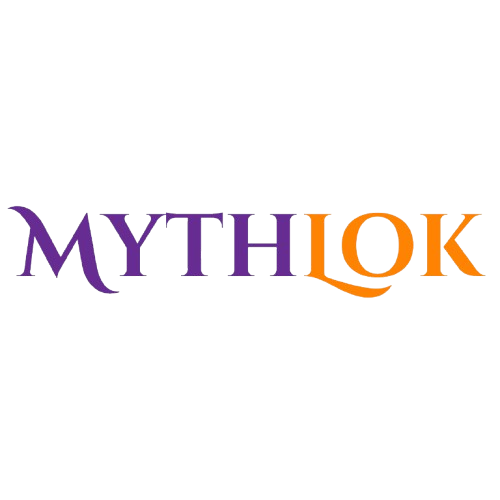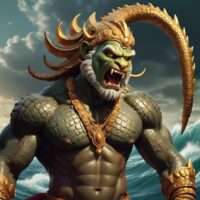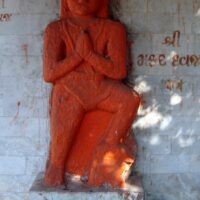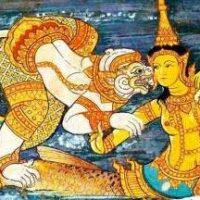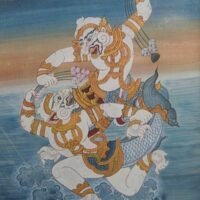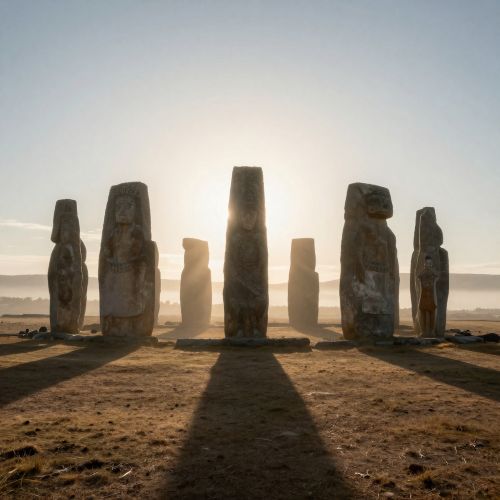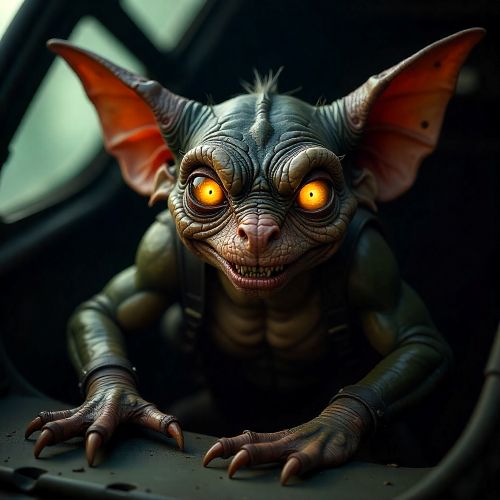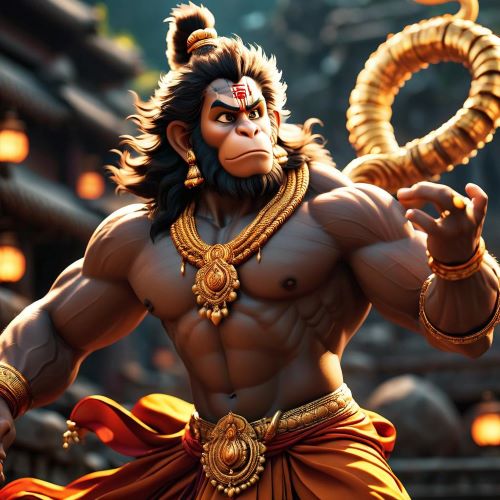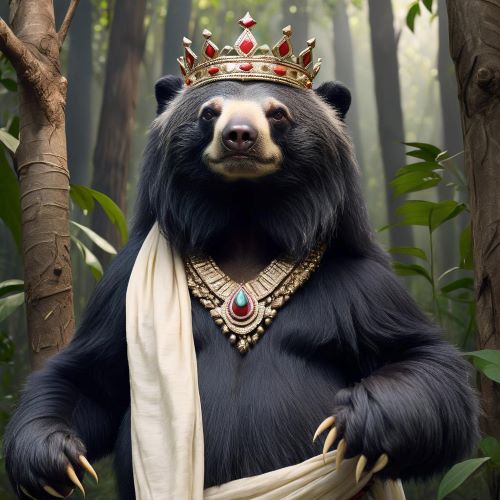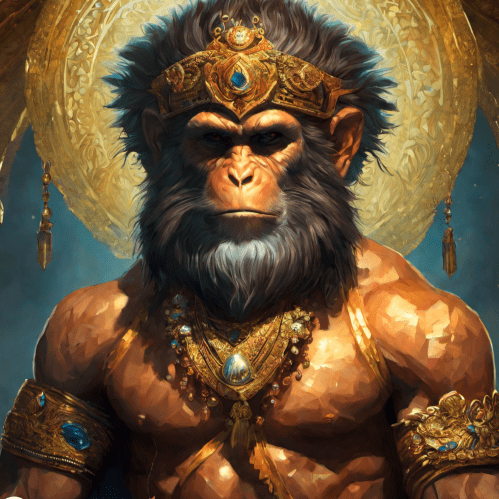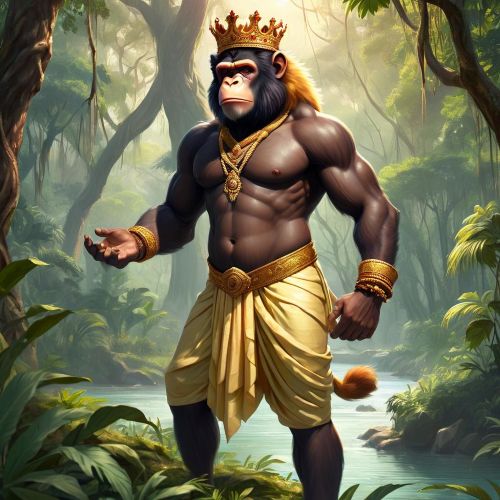Makardhwaja : Son of Hanuman
Listen
At a glance
| Description | |
|---|---|
| Origin | Indian Mythology |
| Classification | Hybrids |
| Family Members | Hanuman (Father) |
| Region | India, Indonesia, Cambodia, Vietnam |
| Associated With | Bravery, Strength |
Makardhwaja
Introduction
Makardhwaja is a significant yet lesser-known figure in Indian mythology, primarily associated with the epic tales of the Ramayana and the Mahabharata. Recognized as the son of Hanuman, the revered monkey god and devoted disciple of Lord Rama, Makardhwaja’s story, though not widely known, is as fascinating and complex as those of more prominent deities and heroes. His tale intertwines with the legendary exploits of Hanuman and the divine narrative of the Ramayana, presenting a rich tapestry of devotion, courage, and divine intervention. Believed to be born from the sweat of Hanuman, Makardhwaja’s origins and adventures are depicted in various regional versions of the Ramayana, highlighting themes of divine conception, conflicting loyalties, and the power of familial bonds.
Physical Traits
Makardhwaja’s physical appearance is subject to interpretation, with one prevalent view linking his name to characteristics reminiscent of a crocodile or mythical sea creature. The term “Makara” translates to “crocodile” or a similar aquatic being, while “dhwaja” signifies “banner” or “emblem.” This suggests Makardhwaja may have possessed features such as a reptilian tail, sharp claws, or a skin texture resembling that of a crocodile. However, the original texts do not explicitly describe his appearance. Alternative interpretations portray him with more human-like attributes, albeit with subtle nods to his unique lineage, illustrating the fluidity of oral storytelling traditions where details evolve over time.
Family
Makardhwaja’s parentage forms the essence of his narrative. He is traditionally regarded as the son of Hanuman, the revered Vanara deity celebrated for his unwavering loyalty to Lord Rama in the Ramayana. The mystery surrounding how a celibate deity like Hanuman could sire a child sparks debate, with two primary explanations offered. In one account, following his fiery exploits in Lanka while searching for Sita, Hanuman cools himself in the sea, where a drop of his divine sweat, infused with his essence, is swallowed by a giant fish-like Makara.
This creature subsequently gives birth to Makardhwaja, thus explaining his name and unique traits. Another version suggests that Anjana, a celestial maiden cursed to inhabit the form of a monkey, inadvertently consumes a divine offering intended for Lord Shiva, resulting in Makardhwaja’s birth, marked by crocodile-like birthmarks. Despite these extraordinary circumstances, Makardhwaja’s lineage ties him to two influential figures in Hindu mythology: Hanuman and, in some interpretations, Shiva.
Other names
In addition to Makardhwaja, he is also known by several alternative names across various regional texts and oral traditions. One such name is Mankarni, which translates to “monkey-eared,” likely emphasizing his connection to the Vanara lineage through his father, Hanuman. Another name is Matsyakanya, meaning “fish-tailed,” which aligns with versions of the tale where Makardhwaja is born from a Makara, a giant fish-like creature. These alternate names provide different insights into Makardhwaja’s origins and physical attributes, illustrating the diverse interpretations found in Indian mythology and enriching the narrative with their distinct perspectives.
Powers and Abilities
Makardhwaja, following in his father Hanuman’s legendary footsteps, is portrayed as a formidable warrior endowed with immense strength and resilience. Like Hanuman, he possesses superhuman abilities such as immense strength, enabling him to wield powerful weapons and perform extraordinary feats. Makardhwaja is also known for his agility and speed, traits inherited from his father, who could traverse vast distances in a single leap. His connection to the Makara creature suggests he may have inherited aquatic abilities as well. However, unlike Hanuman’s unwavering devotion and selflessness, Makardhwaja’s loyalty lies with his adoptive father figure, Ahiravana, the ruler of the netherworld Patala. This conflicting allegiance forms the central conflict in the notable encounter between Makardhwaja and Hanuman depicted in the epics, highlighting Makardhwaja’s unique role and capabilities within the mythological narratives.
Modern Day Influence
Makardhwaja’s presence in modern Hinduism remains relatively limited compared to ubiquitous figures like Rama, Sita, and Hanuman. While he appears in regional traditions and folktales, his story has not achieved widespread recognition in popular consciousness. Nonetheless, there is a growing interest in reviving his tale, evident in contemporary literary works and regional temple murals that depict him. His narrative, which explores themes of loyalty, duty, and complex family ties, holds potential for further exploration through modern artistic interpretations.
In literature, Makardhwaja features in lesser-known adaptations and retellings of the Ramayana, offering insights into Hanuman’s enduring legacy. He is also celebrated in regional folk plays and traditional dance performances, particularly in regions where the Ramayana holds cultural significance. In popular culture, occasional references to Makardhwaja appear in television series and movies that delve into Indian mythological epics. Additionally, his story inspires discussions on divine intervention, miraculous births, and the enduring legacy of familial bonds, contributing to the rich tapestry of Indian mythology and cultural heritage.
Related Images
Frequently Asked Questions
What is lorem Ipsum?
I am text block. Click edit button to change this text. Lorem ipsum dolor sit amet, consectetur adipiscing elit. Ut elit tellus, luctus nec ullamcorper mattis, pulvinar dapibus leo.
What is lorem Ipsum?
I am text block. Click edit button to change this text. Lorem ipsum dolor sit amet, consectetur adipiscing elit. Ut elit tellus, luctus nec ullamcorper mattis, pulvinar dapibus leo.
What is lorem Ipsum?
I am text block. Click edit button to change this text. Lorem ipsum dolor sit amet, consectetur adipiscing elit. Ut elit tellus, luctus nec ullamcorper mattis, pulvinar dapibus leo.
What is lorem Ipsum?
I am text block. Click edit button to change this text. Lorem ipsum dolor sit amet, consectetur adipiscing elit. Ut elit tellus, luctus nec ullamcorper mattis, pulvinar dapibus leo.
What is lorem Ipsum?
I am text block. Click edit button to change this text. Lorem ipsum dolor sit amet, consectetur adipiscing elit. Ut elit tellus, luctus nec ullamcorper mattis, pulvinar dapibus leo.

